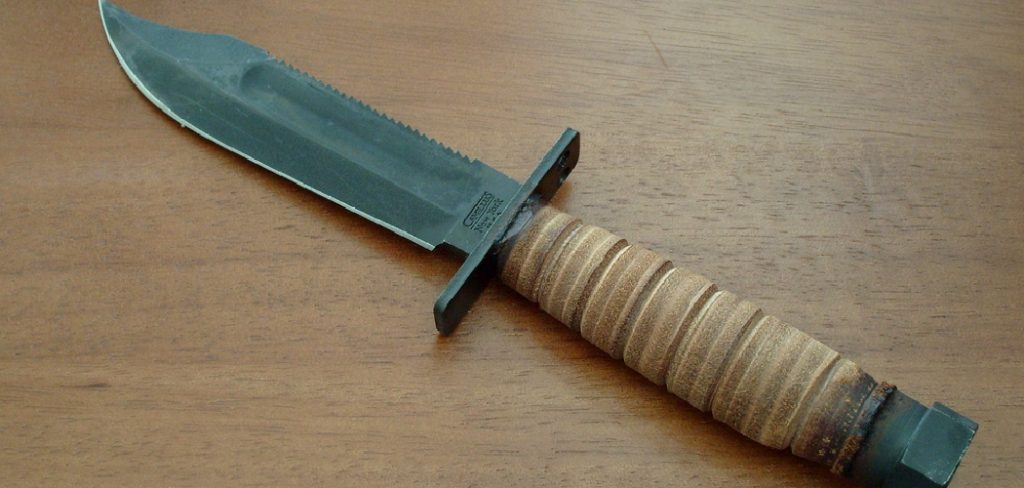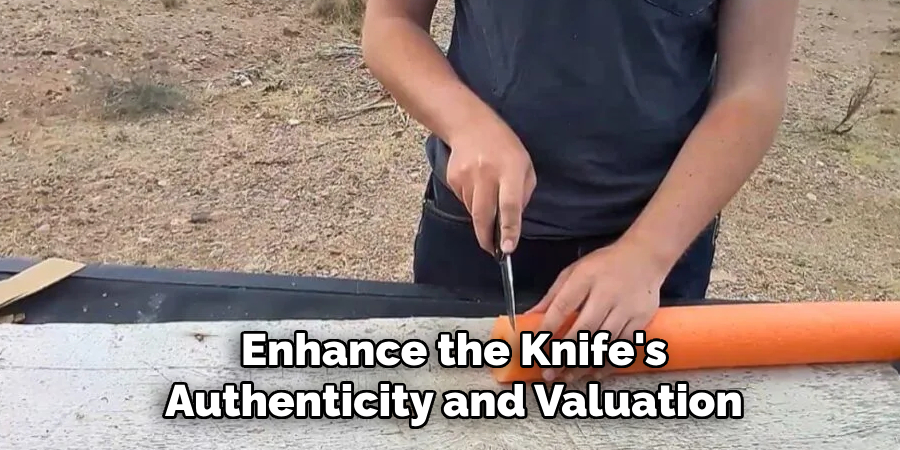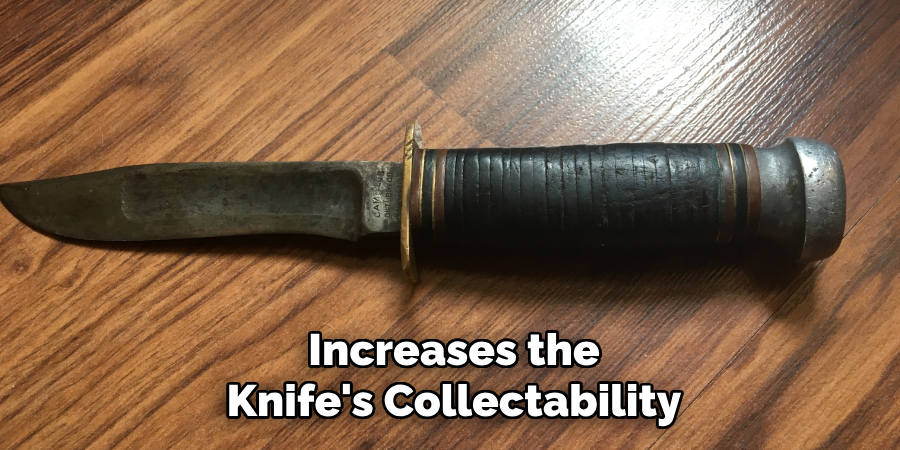Dating a Camillus knife involves understanding the historical context and manufacturing details that distinguish each production era.
The Camillus Cutlery Company, founded in 1876, has a rich history of crafting knives used by military personnel, hunters, and everyday users. Over the decades, Camillus knives have undergone various changes in manufacturing techniques, materials, and design elements, each hinting at their period of manufacture. To accurately date a Camillus knife, collectors and enthusiasts often examine specific features such as tang stamps, blade materials, and handle designs, which are valuable clues in pinpointing the knife’s era.

Whether you’re a seasoned collector or new to the world of vintage knives, learning how to date a Camillus knife can be an engaging and rewarding process.
What are the Benefits of Dating a Camillus Knife?
Dating a Camillus knife can provide valuable insights into its history and significance. By understanding the production techniques, materials, and design elements used in different eras, you can determine the rarity and value of your knife. Additionally, dating a Camillus knife allows you to appreciate it as more than just a functional tool but also a piece of history.
Moreover, as with any collection or hobby, knowledge is power. The more you know about your Camillus knife’s age and background, the better equipped you are to make informed decisions when buying or selling it. You can impress fellow collectors with your knowledge of Camillus knives’ unique features and details.
Furthermore, dating a Camillus knife can be a fun and fulfilling experience. It allows you to connect with the past, uncovering exciting stories and anecdotes about the company’s history and the people who used these knives. It also enables you to appreciate the craftsmanship and evolution of Camillus knives over time.
10 Easy Steps on How to Date a Camillus Knife
Step 1. Examine the Tang Stamp:
The tang stamp on a Camillus knife is one of the most significant indicators of its age and authenticity. It is typically located on the base of the blade and serves as a brand identifier. Over the years, Camillus used various tang stamp designs, and these subtle differences can be key to dating your knife. Early Camillus tang stamps often featured elaborate designs with detailed engravings. For instance, knives produced in the early 20th century might showcase company names in flowing script, whereas mid-century knives bore simpler, more practical stamps.

By studying the tang stamp and comparing it with historical records or resources dedicated to Camillus knives, enthusiasts can identify whether a knife comes from a particular era of innovation, such as the pre-war expansion or the post-war boom. Therefore, an in-depth examination of the tang stamp is an essential first step in dating a Camillus knife.
Step 2. Analyze the Blade Material:
The type of material used for the blade can be a significant clue in dating a Camillus knife. During different periods, Camillus employed various materials for blade construction, including carbon steel, stainless steel, and other proprietary alloys. Knives from the early 20th century often feature high-carbon steel blades, which are renowned for their edge retention and ease of sharpening but also more prone to corrosion.
As technology and demands evolved, Camillus introduced stainless steel blades that offered excellent resistance to rust and required less maintenance. By identifying the blade material and corroborating it with historical production data or catalogs, you can narrow down the time frame in which your knife was manufactured. Understanding these nuances not only aids in dating your blade but also helps maintain and preserve its condition appropriately.
Step 3. Inspect the Handle Design:
The design and material of the handle can also provide valuable insights into the production era of a Camillus knife. Over the years, Camillus experimented with various handle materials and construction techniques, ranging from natural materials like bone, wood, and stag to synthetic materials such as Bakelite and plastic. Early models feature intricate handle patterns and elaborate inlays, while later versions display simpler designs that reflect mid-century minimalist trends or innovations in synthetic materials.
By examining the handle’s material and design, collectors can compare these characteristics to known Camillus production periods or catalogs, which helps determine the knife’s approximate age. Additionally, familiarizing oneself with the details of craftsmanship typical of specific periods can enhance the accuracy of dating the handle design.
Step 4. Review Any Markings or Engravings:
Apart from tang stamps and blade materials, additional markings or engravings on a Camillus knife can be crucial indicators of its production period. These could include serial numbers, special edition symbols, or even personal engravings from previous owners. Each marking tells a part of the knife’s story. Serial numbers, when available, can sometimes be matched with production records to narrow down the exact year or batch of production. Additionally, limited edition knives might feature unique engravings or commemorative symbols corresponding to specific events or milestones in the company’s history, providing solid dating evidence.

Collectors can also research personal engravings or customizations to unveil stories or ascertain timelines relevant to the knife’s past. Therefore, investigating these markings enhances one’s understanding of the knife’s lineage and can bolster the dating process with precise historical context.
Step 5. Check the Knife’s Overall Condition:
The overall condition of a Camillus knife, including signs of wear, can offer insights into its age and usage history. While examining the knife, note any patina, rust, sharpening marks, or chipped blade areas. Older knives, which have seen more service, often display more wear and tear. Conversely, if a knife appears pristine, it may be a recent production, a well-preserved piece, or even a reproduction. Understanding the condition also helps in assessing the knife’s authenticity and value. Collectors can compare the knife’s condition with known conditions of similar-era pieces to reinforce their dating conclusions.
Step 6. Consult Historical References:
Gathering information from historical references such as catalogs, advertisements, or books about Camillus knives is an integral step in accurately dating a knife. These resources often describe knife models, materials, and designs prevalent in different eras. By cross-referencing your findings from previous steps with these materials, you can align your knife with specific production years or developments in the company’s history. Consultation of reliable sources supports the dating process and enriches the collector’s understanding of Camillus’s manufacturing legacy.
Step 7. Compare with Other Collections:
Networking with fellow Camillus knife collectors and comparing your knife to pieces in their collections can offer valuable insights. Engaging with collector communities, attending knife shows, and participating in online forums can help you gather practical knowledge about dating knives. Others might possess the identical model or have experience dating similar versions, offering firsthand information and advice. This collaboration can confirm your findings and introduce you to additional dating techniques, providing a broader perspective on how your knife fits within the historical timeline of Camillus production.

Step 8. Evaluate Packaging and Accessories:
Examining any original packaging or accompanying accessories can reveal the knife’s age. Packaging styles, logos, and any associated manuals or product brochures often reflect the design and branding norms of when the knife was sold. Accessories like sheathes or boxes may have unique identifying features, such as materials or labeling, that can help date the production era. Therefore, thoroughly evaluating these elements alongside the knife itself can add context and detail to your dating efforts and enhance the knife’s authenticity and valuation.
Step 9. Seek Expert Appraisal:
When uncertain about the dating of a Camillus knife, seeking an expert appraisal can be invaluable. Professional appraisers and specialists in knife history or vintage knives possess the expertise to assess a knife’s features and condition accurately. They have access to industry resources and databases that may need to be more readily available to individual collectors. An expert appraisal establishes a credible timeline for your knife’s production date and can also aid in verifying its authenticity and market value.
Step 10. Document Your Findings:
Finally, documenting your findings and the process you followed to date your Camillus knife is essential for future reference and sharing with potential buyers or fellow collectors. A thorough record should include photographs, detailed descriptions of each characteristic examined, and any historical references or sources utilized. This documentation preserves the knowledge gained and increases the knife’s collectability and appeal by providing prospective buyers or collectors with a comprehensive provenance. By methodically recording the information gathered, you ensure that your efforts contribute to the broader understanding and appreciation of Camillus knives.

With these ten steps, accurately dating a Camillus knife becomes an attainable goal for collectors.
Conclusion
How to date a Camillus knife requires a diligent approach, combining historical research with practical examination.
Following the outlined steps, collectors can compile a comprehensive picture of their knife’s history. Understanding the knife’s unique markings, overall condition, and accompanying accessories are crucial starting point. Cross-referencing historical records and collaborating with other collectors adds depth to the investigation, while expert appraisals offer professional validation. Documenting the findings augments the knife’s provenance and enriches the historical narrative of Camillus’s manufacturing legacy.
Ultimately, these efforts ensure that each knife is celebrated as a functional tool and a valued piece of history.
Edmund Sumlin is a skilled author for Metal Fixes, bringing 6 years of expertise in crafting a wide range of metal fixtures. With a strong background in metalwork, Edmund’s knowledge spans various types of fixtures, from decorative pieces to functional hardware, blending precision with creativity. His passion for metalworking and design has made him a trusted resource in the industry.
Professional Focus:
- Expert in Metal Fixtures : Edmund aesthetic specializes in creating durable and innovative metal fixtures, offering both appeal and functionality. His work reflects a deep understanding of metalworking techniques and materials.
- Sustainability Advocate : He is dedicated to using sustainable practices, ensuring that every fixture is crafted with eco-friendly methods while maintaining high-quality standards.
In his writing for Metal Fixes, Edmund provides valuable insights into the latest trends, techniques, and practical advice for those passionate about metal fixtures, whether they are professionals or DIY enthusiasts. His focus on combining artistry with engineering helps others discover the true potential of metal in design.


